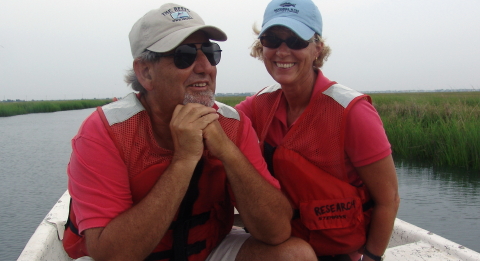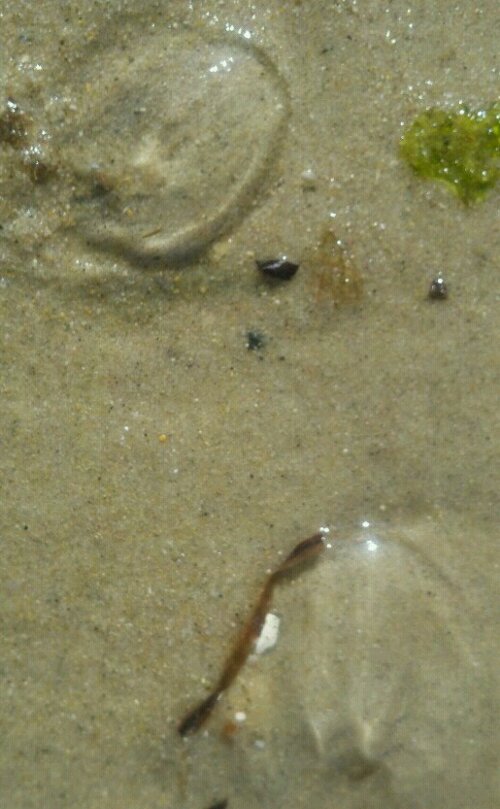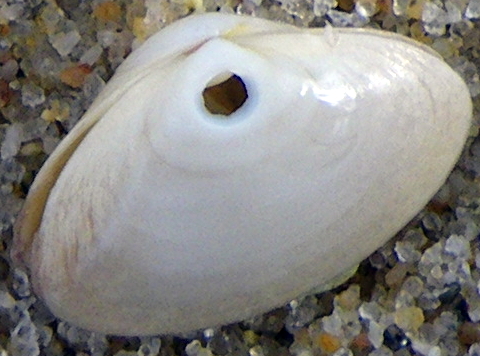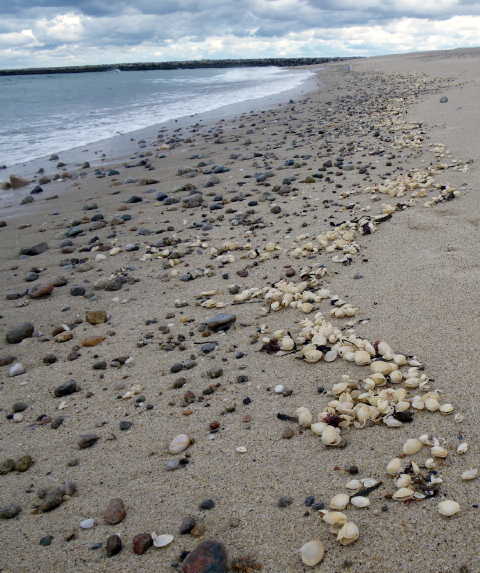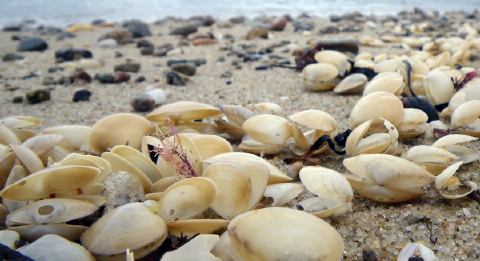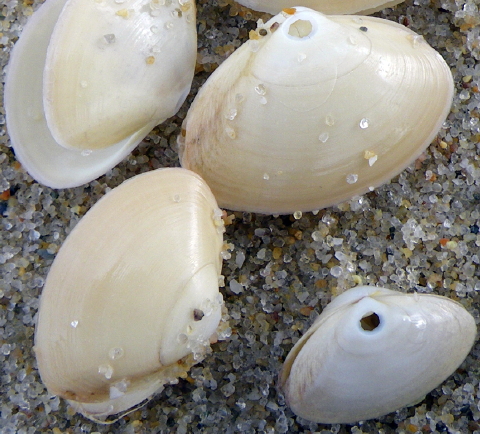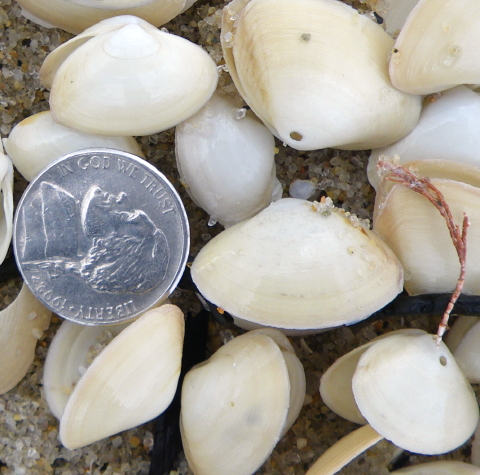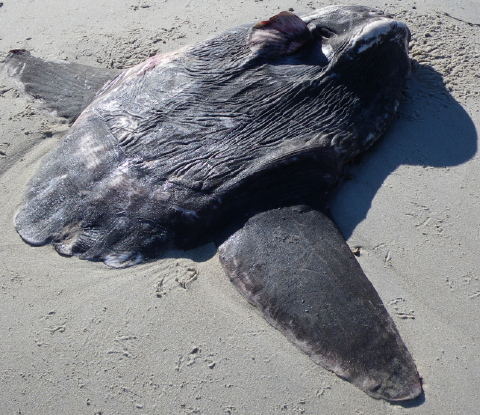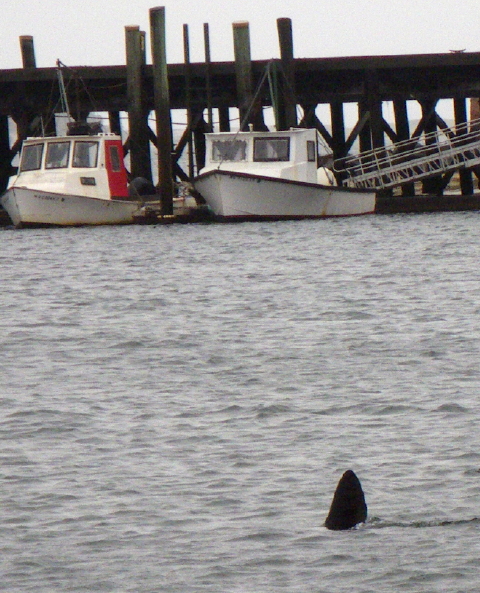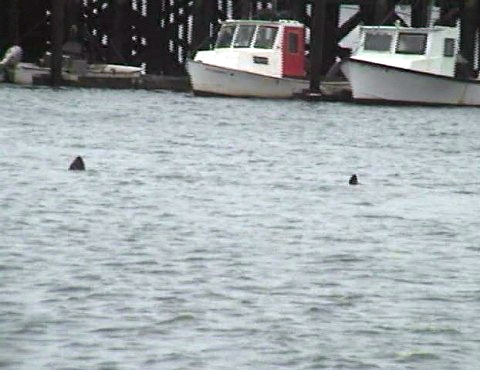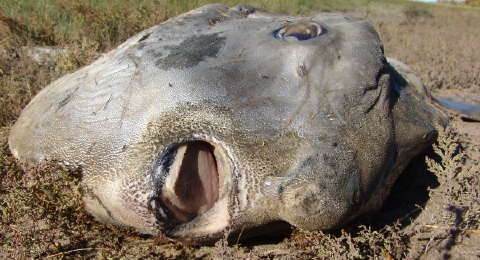
Giant Ocean Sunfish Strands in Wellfleet Harbor
Sadly, there has been a spate of ocean sunfish strandings and deaths in Wellfleet Harbor and elsewhere along Cape Cod Bay within the last week. During this time of year pelagic ocean sunfish enter Cape Cod estuaries, apparently to forage in rich fall tidal waters filled with plankton and ctenophores.  Last week Turtle Journal observed a pair of ocean sunfish foraging in Wellfleet Harbor. See Ocean Sunfish Pair Foraging in Wellfleet Harbor. Wellfleet Harbor and other estuaries of the Outer Cape enjoy healthy flushing by as much as a 15-foot vertical tidal difference between the highest high tide (+13 feet) and the lowest low tide (-2 feet). The flow of that much water through such narrow estuaries and along such extensive tidal flats creates a killing zone where these peculiar animals get trapped in the shallows, strand and die.
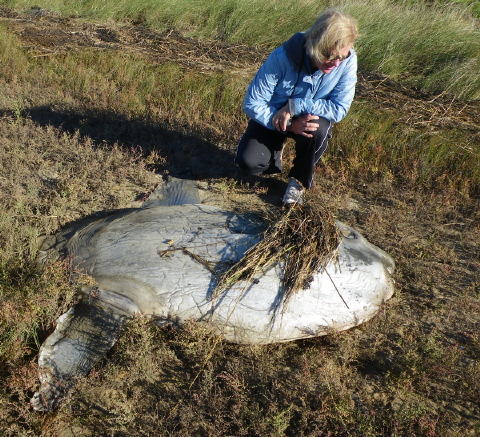
Sue Wieber Nourse Examines Young Female Ocean Sunfish
On Saturday a young female ocean sunfish got trapped in Chipman’s Cove in Wellfleet Harbor and stranded. She was likely the smaller of the two ocean sunfish that we saw foraging in the harbor last week. Pam Harding, a fall vacationer in a cottage on exquisite Chipman’s Cove who had been alerting us to large megafauna in the harbor, reported the discovery of this sunfish and another one further along the beach. We reached the fresh carcass early Sunday morning.
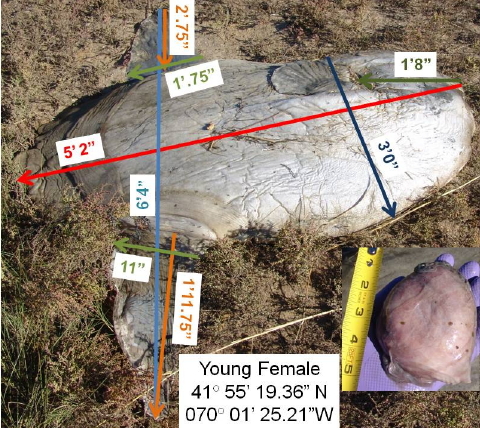
Documentation of Young Female Ocean Sunfish
We collected morphometric data on this sunfish as she lay in the salt marsh just below the high water line. She measured only 5 feet 2 inches from tip of snout to the trailing edge of her truncated caudal fin. Her height from the bottom tip of the ventral fin to the top of the dorsal fin was 6 feet 4 inches. The design of ocean sunfish and the way they swim through the water, as you can observe in our YouTube video in last week’s post, poses substantial risk in the inter-tidal shallows that swiftly empty during receding astronomical tides.
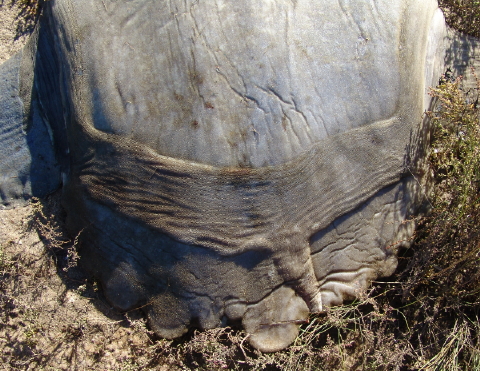
“Truncated” Caudal Fin of Ocean Sunfish
The truncated caudal fin, also called a clavus (rudder), coupled with the very large span from ventral fin to dorsal fin, makes the ocean sunfish extremely vulnerable as it swims and forages in these inter-tidal waters.Â
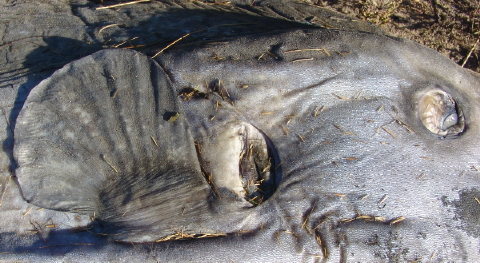
Sunfish Pectoral Fin, Operculum over Gills, and Eye
AÂ tiny pectoral fin lies immediately behind the gills which are covered by an operculum, all behind the eyes and the snout.Â
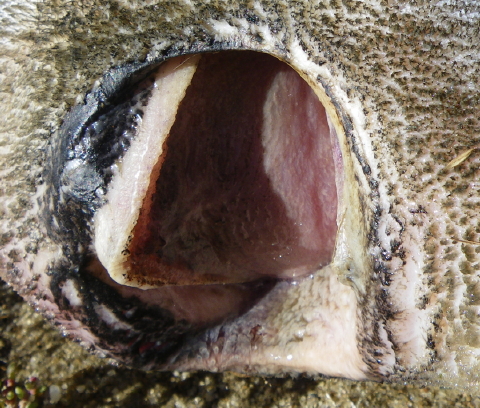
Ocean Sunfish Mouth and Fused Teeth
The open mouth shows the species’ fused teeth. When we examined her gastro-intestinal track, we found plentiful amounts of digested food. In every regard, she seemed an extremely healthy specimen with no indication of a cause of death other than being trapped in the killing zone.

Young Female Ocean Sunfish Ovary
This ocean sunfish was identified as a young female because of the presence of a small ovary and her overall small size.
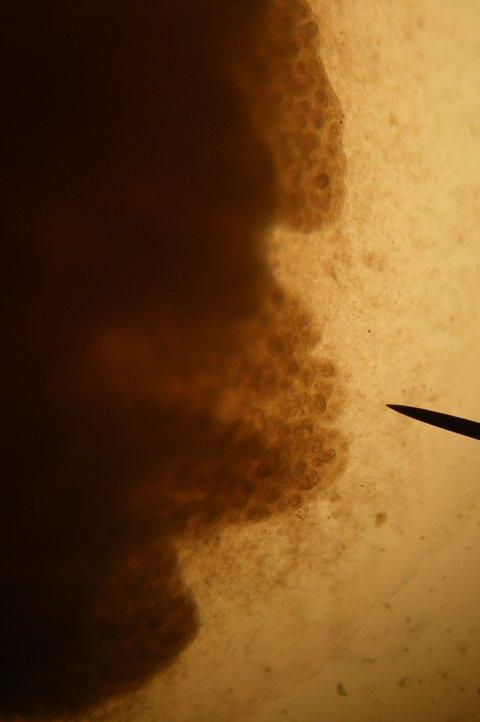
Under the Microscope: Female Ocean Sunfish Oocytes
Examination of a slice of her ovary under a microscope showed healthy oocytes, consistent with her overall healthy appearance.
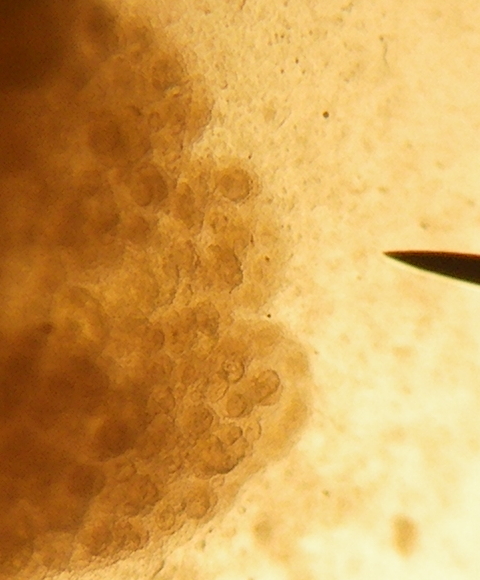
Under the Microscope: Close-Up of Ocean Sunfish Oocytes
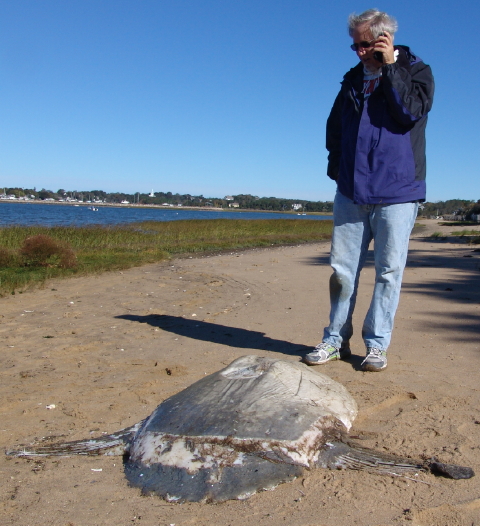
Don Lewis Reports Second Stranded Ocean Sunfish
A couple of hundred feet north along the wrack line, we found the second ocean sunfish, which had already suffered significant deterioration and decomposition. This specimen had been dead for some time.
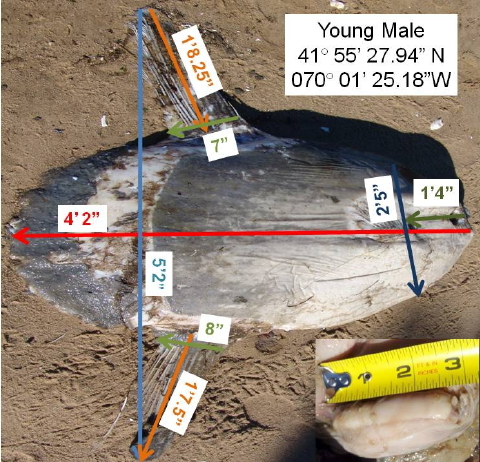
Documentation of Young Male Ocean Sunfish
This small ocean sunfish measured a mere 4 feet 2 inches from snouth to caudal fin, and 5 feet 2 inches from ventral fin to dorsal fin. The eye had already disappeared to predators that had also nibbled along the edges of the carcass.
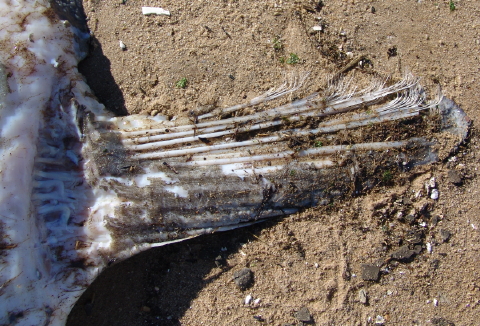
Exposed Bones of Ocean Sunfish Dorsal Fin
Several measurements, such as the width of the dorsal and ventral fins, had to be approximated because the skin had deteriorated.Â
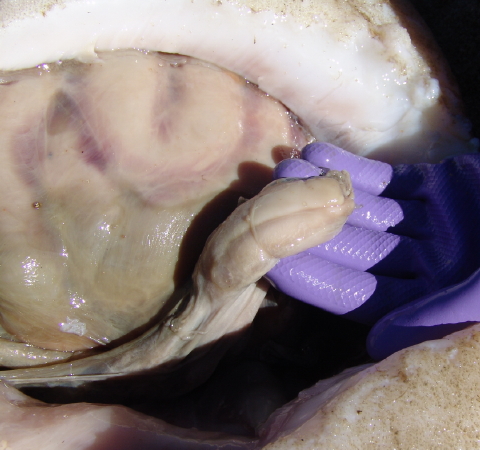
Young Male Ocean Sunfish Testes
This small animal was identified as a young male by the testes.
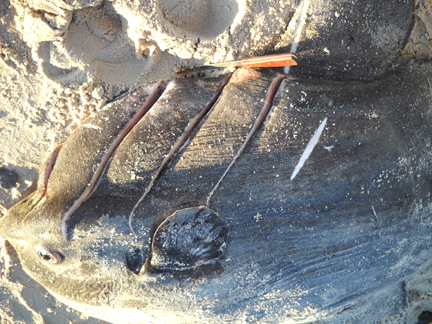
Small Ocean Sunfish Sliced by Propeller
On Saturday, Carol “Krill” Carson had responded to a report of an ocean sunfish at Linnell Landing in Brewster. The carcass had come ashore about 2 PM in the afternoon. This specimen was identified as a small male and measured between 4 and 5 feet long. The location of deep prop slices at the top of this ocean sunfish suggests that a boat strike was the cause of death.
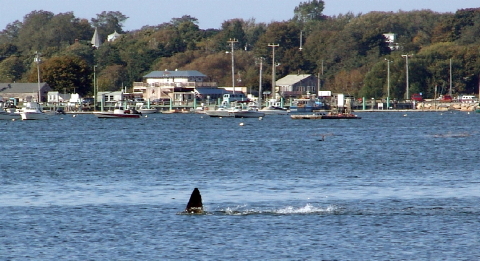
Giant Ocean Sunfish Forages in Wellfleet’s Chipman’s Cove
Today, Wednesday the 13th of October, Krill discovered another extremely decomposed male sunfish north of Chipman’s Cove in Wellfleet Harbor across from Shirttail Point. And, finally, around sunset tonight Pam Harding reported that she observed another ocean sunfish foraging in Chipman’s Cove, which she thought had departed the cove as the tide receded. We will all keep a careful watch on the cove in the next few days and weeks as this killing zone continues to claim giant ocean sunfish.
